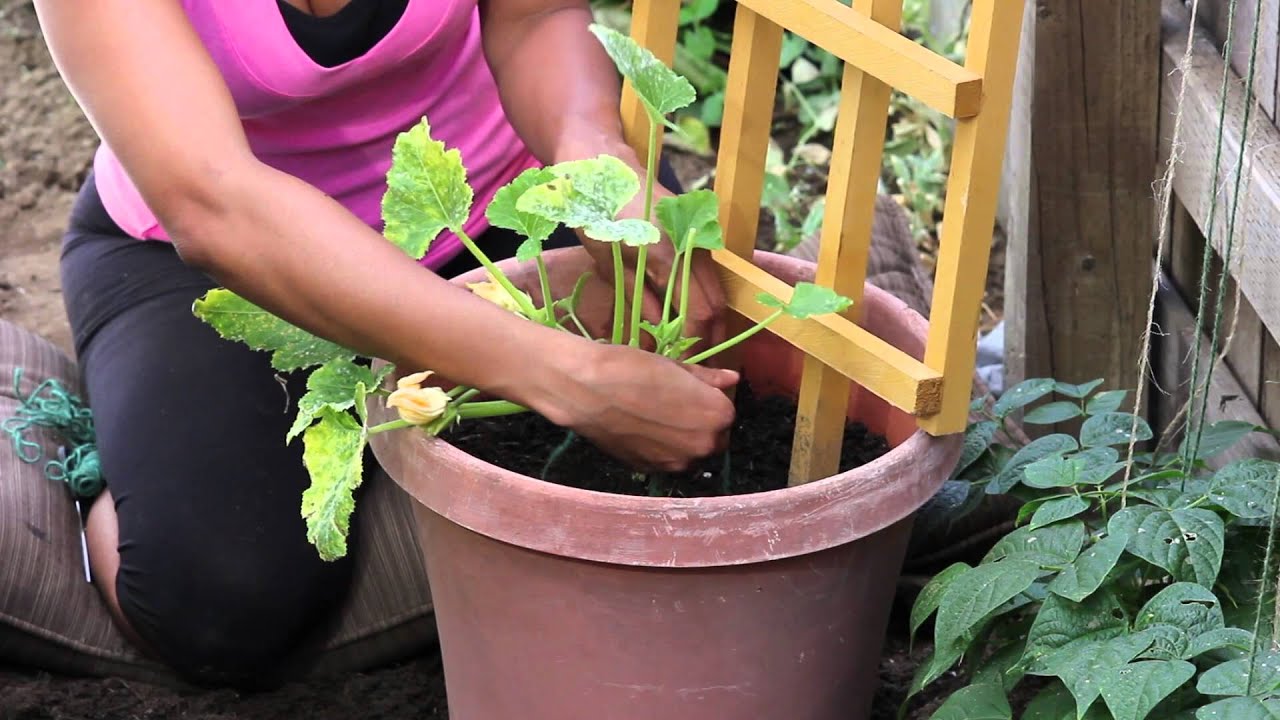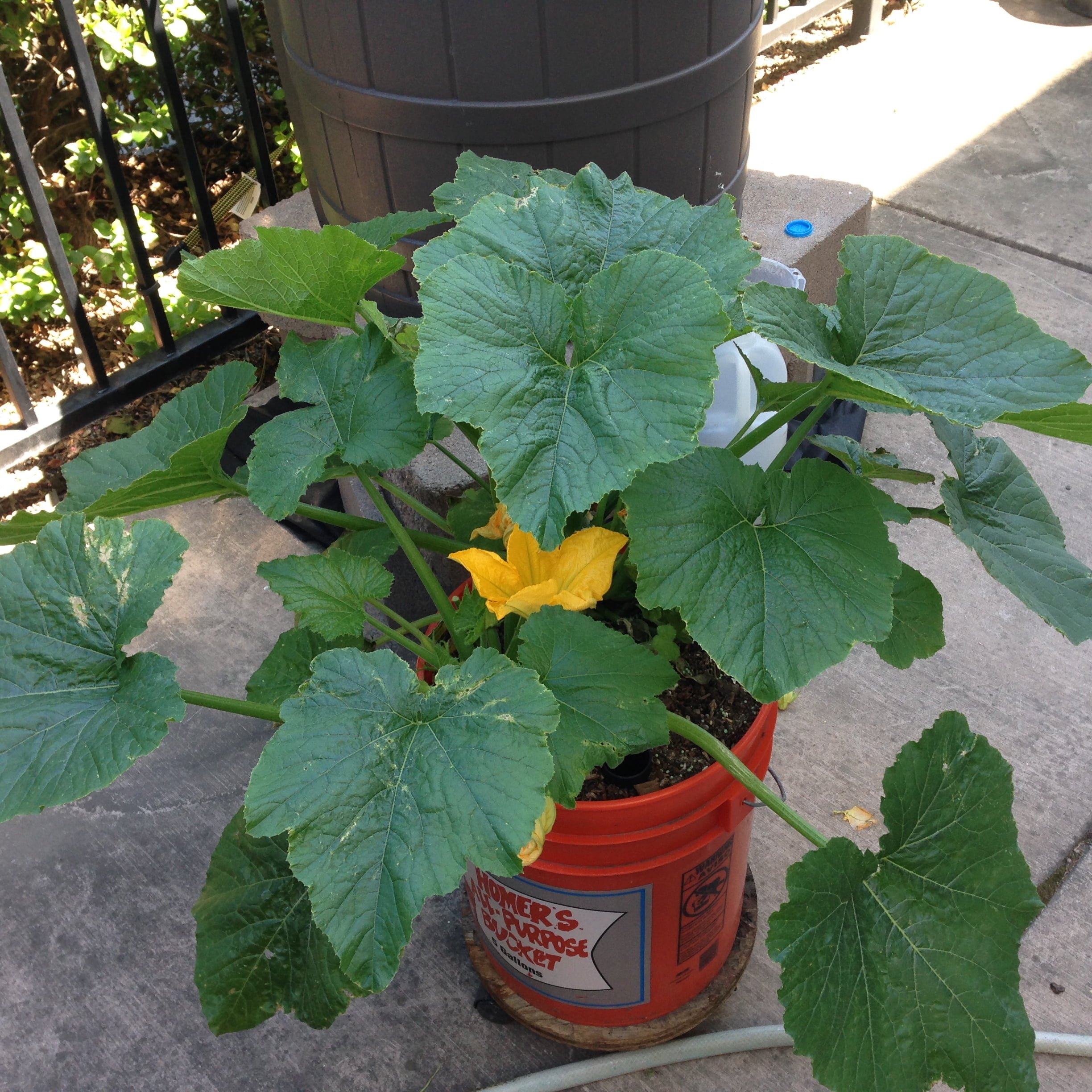Are you a gardening enthusiast craving some fresh, homegrown zucchini? Look no further! In this article, we will show you the perfect solution for growing zucchini in limited space: a 5-gallon bucket. Yes, you heard it right! With some simple steps and a little bit of patience, you can successfully nurture vibrant zucchini plants in the comfort of your own backyard. Wondering how many zucchini plants can fit in a 5-gallon bucket? Read on to find out!
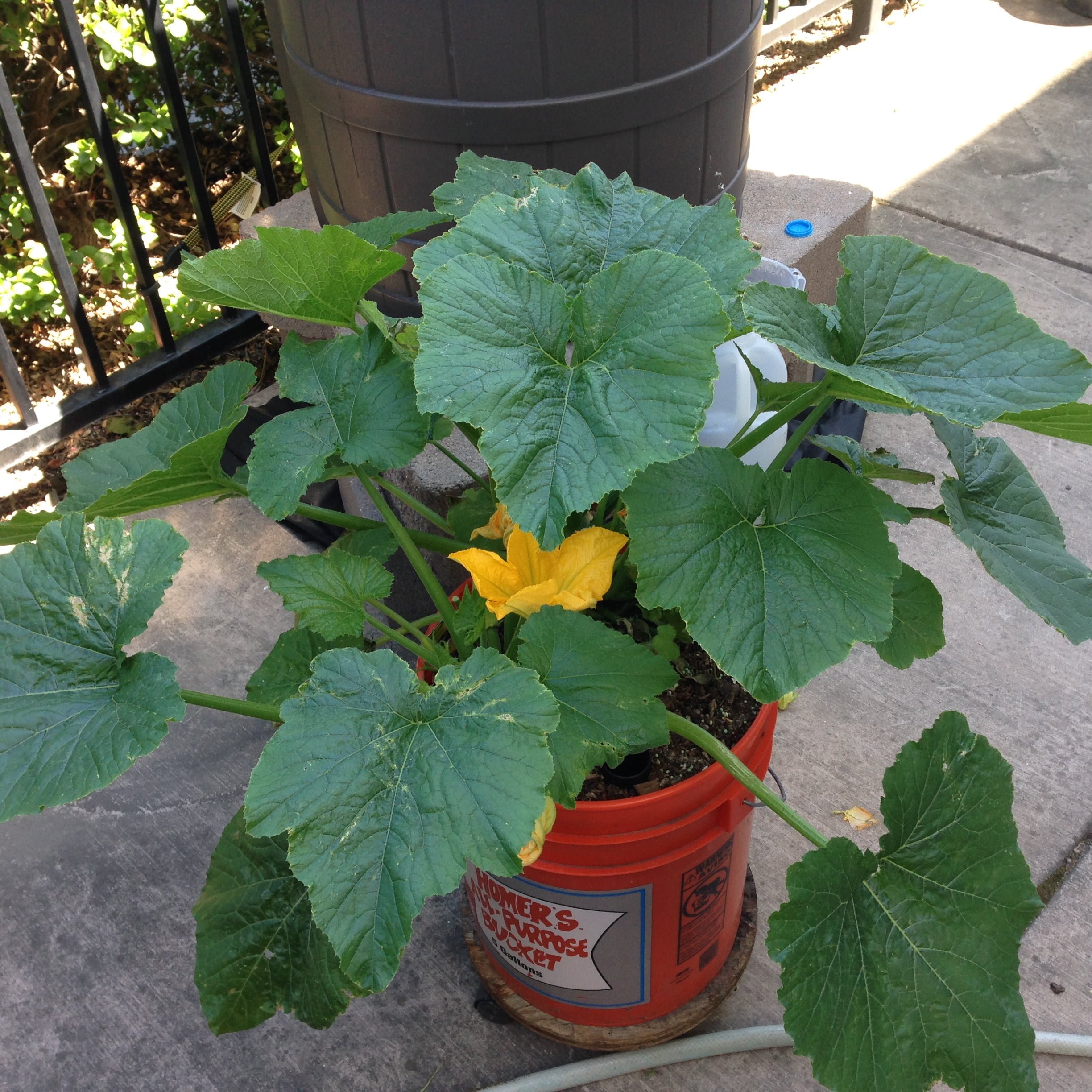
Preparing the 5-Gallon Bucket
Choosing the right type of bucket
When it comes to growing zucchini in a 5-gallon bucket, choosing the right type of bucket is crucial. Look for a sturdy bucket that is made of food-grade material, such as high-density polyethylene (HDPE). This ensures that the bucket is safe for growing vegetables and won’t leach any harmful chemicals into the soil. Additionally, consider the color of the bucket. Opt for a light-colored bucket as it will reflect heat, preventing the roots from overheating in hot weather.
Cleaning and sterilizing the bucket
Before using the bucket for planting, it’s important to clean and sterilize it to prevent the risk of diseases or pests. Start by washing the bucket with warm, soapy water to remove any dirt or debris. Rinse thoroughly to ensure all the soap is gone. To sterilize the bucket, mix a solution of 1 part bleach to 9 parts water and wipe down the inside of the bucket with it. Rinse the bucket thoroughly with clean water to remove any remaining bleach residue.
Drilling drainage holes
Proper drainage is essential for the success of your zucchini plants. Use a drill to create several drainage holes in the bottom of the bucket. These holes will allow excess water to drain out, preventing the roots from becoming waterlogged and avoiding the risk of root rot. Aim for around six to eight holes spaced evenly across the bottom of the bucket.
Adding a drainage layer
To further enhance drainage, add a layer of rocks or gravel at the bottom of the bucket. This drainage layer will help excess water to flow away from the roots. It also prevents the soil from becoming compacted over time. A layer of about two inches should be sufficient. Make sure the layer is evenly spread across the bottom of the bucket.
Selecting and Preparing Zucchini Seeds
Choosing zucchini variety
When it comes to selecting the variety of zucchini to grow, consider factors such as climate, available space, and personal preference. Some popular zucchini varieties for container gardening include Black Beauty, Costata Romanesco, and Gold Rush. Choose a variety that is well-suited for your growing region and fits the size limitations of the 5-gallon bucket.
Testing the seed viability
Before starting your zucchini seeds, it’s a good idea to test their viability. This will help ensure that the seeds are still viable and will have a higher chance of germination. To perform a simple viability test, place a few seeds on a damp paper towel and fold it over to cover the seeds. Keep the towel moist and place it in a warm location. After a few days, check if the seeds have sprouted. If most of the seeds have germinated, you can proceed with confidence.
Starting seeds indoors
To give your zucchini plants a head start, it’s recommended to start the seeds indoors. Fill seed trays or small pots with potting soil and plant one or two zucchini seeds in each container. Cover the seeds with a thin layer of soil and lightly mist the surface with water. Place the trays or pots in a warm and sunny location, such as a windowsill. Keep the soil consistently moist, but avoid overwatering. Within a week or two, the seeds should germinate.
Transplanting seedlings to the bucket
Once the zucchini seedlings have developed a few sets of true leaves and are about 3-4 inches tall, they are ready to be transplanted into the 5-gallon bucket. Gently remove the seedlings from their containers, being careful not to damage the fragile roots. Dig a hole in the prepared bucket large enough to accommodate the root ball of the seedling. Place the seedling in the hole, backfill with soil, and gently tamp it down. Water the seedling thoroughly after transplanting to help it establish in its new home.
Providing the Right Growing Conditions
Ensuring proper sunlight exposure
Zucchini plants thrive in full sun, so it’s important to provide them with at least 6-8 hours of direct sunlight per day. Place your 5-gallon bucket in the sunniest spot in your garden or on your patio. If you don’t have a suitable location that receives adequate sunlight, consider using grow lights to supplement light conditions.
Optimizing soil pH and fertility
Zucchini plants prefer a slightly acidic to neutral soil pH ranging from 6.0 to 7.0. Test the pH of your soil using a pH testing kit, and if necessary, adjust it by adding amendments like lime to raise the pH or elemental sulfur to lower it. Additionally, enrich the soil with organic matter, such as compost or well-rotted manure, to improve fertility and provide essential nutrients for the plants’ growth.
Providing adequate water and drainage
Zucchini plants require consistent moisture to thrive. Water the plants deeply whenever the top inch of soil feels dry to the touch. Use a watering can or a gentle spray to avoid excessive splashing and disturbing the soil. The drainage holes in the bucket will prevent waterlogging, but always ensure that excess water can drain freely. Monitor the moisture level regularly and adjust your watering schedule as needed to avoid both underwatering and overwatering.
Maintaining appropriate temperature
Zucchini plants are warm-season crops and prefer temperatures between 70-90°F (21-32°C) during the day and around 60-70°F (15-21°C) at night. Avoid planting your zucchini too early in the growing season when temperatures are still cool, as this can inhibit growth. If nighttime temperatures dip below 60°F (15°C), consider using row covers or other protective measures to keep the plants warm. Conversely, if temperatures become excessively hot, provide shade during the hottest parts of the day to prevent stress.
Planting and Caring for Zucchini
Determining the number of plants per bucket
When growing zucchini in a 5-gallon bucket, it’s important to consider the space available for the plants to grow. Generally, one zucchini plant is sufficient for each bucket. However, you can experiment with two plants per bucket if you choose a compact variety or have a larger container. Just make sure to provide enough space for the plants to spread out and access adequate nutrients and water.
Preparing the planting hole
Before planting your zucchini seeds or seedlings, prepare the planting hole in the bucket. Dig a hole deep enough to accommodate the entire root ball of the seedling or the depth recommended for seed planting. Make sure the hole is wide enough to easily place the plant or seeds without bending or damaging them.
Planting zucchini seeds or seedlings
If planting zucchini seeds directly into the bucket, sow them at a depth of about 1-2 inches. Place the seeds in the center of the planting hole and cover them with soil. Gently tamp down the soil to ensure good seed-to-soil contact. Water the seeds well after planting.
If using seedlings, carefully place the plant in the center of the planting hole and backfill with soil, ensuring that the top of the root ball is level with the surrounding soil. Gently press the soil around the seedling to secure it in place. Water the seedling thoroughly after planting to help it settle.
Watering and mulching
After planting, water the zucchini plants thoroughly to help them establish their root systems. Use a gentle spray or watering can to avoid dislodging the soil. To help conserve moisture and maintain even soil temperatures, apply a layer of organic mulch around the base of the plants. Mulch will suppress weed growth, retain moisture, and improve soil health over time.
Fertilizing zucchini plants
Regular fertilization is essential for the strong and healthy growth of zucchini plants. Use a balanced organic fertilizer or a slow-release granular fertilizer specifically formulated for vegetables. Follow the manufacturer’s instructions for application rates and timings. Always water the plants after fertilizing to ensure that the nutrients reach the roots.
Pruning and trellising for vertical growth
Pruning zucchini plants can help improve air circulation, reduce the risk of diseases, and enhance fruit production. As the plants grow, regularly monitor for any dead or damaged leaves and remove them promptly. Additionally, zucchini plants can be trained to grow vertically by providing trellises or stakes for support. This method saves space and enables better airflow around the plants.
Preventing pests and diseases
To keep your zucchini plants healthy, monitor them regularly for any signs of pests or diseases. Common pests that can affect zucchini plants include aphids, squash bugs, and cucumber beetles. If detected, treat the infestation with organic pest control methods, such as handpicking, introducing beneficial insects, or using natural pest repellents.
Diseases like powdery mildew and blossom end rot can also affect zucchini plants. To prevent these issues, ensure proper air circulation around the plants, avoid overhead watering, and practice crop rotation to reduce the risk of disease build-up in the soil.

Harvesting and Storing Zucchini
Monitoring the growth and maturity
Zucchini plants produce an abundance of fruit, so it’s important to regularly monitor their growth and maturity. Harvesting zucchini when they are at the right size ensures optimal taste and texture. Check your plants daily and look for zucchinis that are about 6-8 inches long, which is the ideal size for most zucchini varieties. If left on the plant too long, they can become oversized and lose their tenderness.
Harvesting zucchini properly
To harvest zucchini, use a sharp pair of garden shears or a knife to cut the fruit from the plant. Make a clean cut just above the stem, being careful not to damage the plant. Avoid pulling or twisting the zucchini as this can damage the stem or even uproot the plant. Harvesting regularly promotes continuous production throughout the growing season.
Storing zucchini
Freshly harvested zucchini can be stored in the refrigerator for up to a week. Keep the zucchini unwashed and place it in a plastic bag or airtight container to maintain its moisture. For long-term storage, consider freezing or preserving zucchini by blanching and canning or making zucchini-based dishes that can be frozen for future use.
Common Problems and Solutions
Yellowing leaves and poor growth
If your zucchini plants have yellowing leaves and poor growth, it could be a sign of nutrient deficiency, improper watering, or poor soil drainage. Check the soil moisture level, adjust the watering, and ensure proper drainage. Consider testing the soil for nutrient deficiencies and applying appropriate organic fertilizers or soil amendments to rectify any imbalances.
Wilting or drooping plants
Wilting or drooping zucchini plants may indicate underwatering or overwatering. Check the soil moisture level and adjust your watering accordingly. Alternatively, wilting can be a sign of root rot caused by excessive moisture and poor drainage. Improve the drainage by ensuring that the drainage holes in the bucket are clear and that the layer of rocks or gravel at the bottom is functioning properly.
Flowering but no fruiting
If your zucchini plants are flowering but not producing fruits, it could be due to poor pollination. Zucchini plants rely on pollinators like bees to transfer pollen between the male and female flowers. To enhance pollination, consider attracting pollinators to your garden by planting flowers that attract bees and avoiding the use of chemical insecticides that can harm beneficial insects.
Pests and diseases
Zucchini plants can be susceptible to various pests and diseases, including aphids, squash bugs, bacterial wilt, and powdery mildew. Monitor your plants regularly and take necessary measures such as handpicking pests, using organic pest control methods, and providing proper ventilation to prevent and control infestations. Applying organic fungicides can help control powdery mildew.
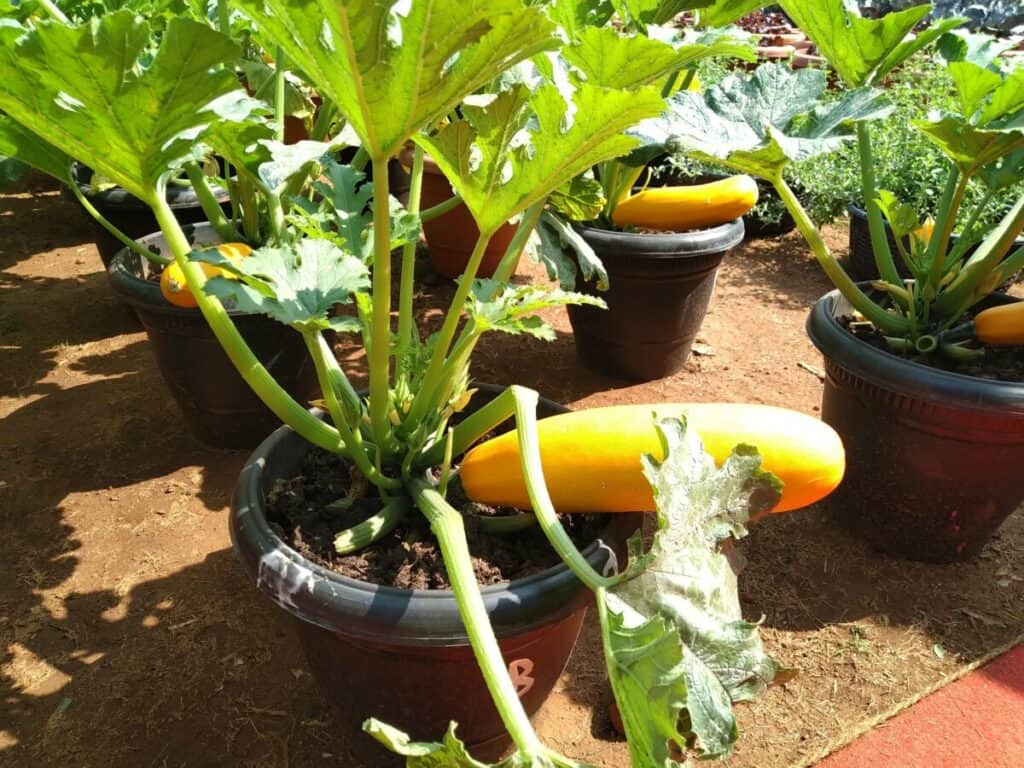
Expanding the Growing Season
Starting seeds earlier
To extend the growing season for zucchini, start the seeds indoors a few weeks before the last expected frost date in your area. This gives the plants a head start and enables them to be transplanted into the 5-gallon bucket earlier in the season. Be sure to provide adequate light and warmth for the seedlings during their indoor growth period.
Extending the growing season in fall
In regions with mild winters, you can extend the zucchini growing season well into the fall by protecting the plants from colder temperatures. Covering the plants with row covers or using cold frames can provide necessary insulation and protect them from frost. Additionally, consider selecting cold-hardy zucchini varieties that are more tolerant of cool temperatures.
Using frost protection techniques
If unexpected frost or freezing temperatures occur, it’s essential to protect your zucchini plants. Cover them with blankets, tarps, or even old bedsheets to provide insulation and trap heat from the soil. Remove the covers during the day when temperatures rise above freezing.
Alternate Planting Methods
Growing zucchini in self-watering buckets
If you’re concerned about watering consistency or have limited time to tend to your zucchini plants, consider growing them in self-watering buckets. These containers have a reservoir at the bottom that provides a steady supply of water, ensuring that the plants receive adequate moisture without the risk of overwatering.
Growing zucchini in fabric bags or pots
If you don’t have access to 5-gallon buckets, fabric bags or larger pots can also be used to grow zucchini. Make sure the containers have proper drainage holes and follow the same planting and care guidelines as mentioned for buckets. Fabric bags allow for better airflow and can help prevent overwatering.
Vertical gardening with zucchini
For those with limited space, vertical gardening techniques can be employed to grow zucchini in a compact manner. Install trellises or use sturdy stakes to support the plants as they grow vertically. This method not only maximizes space but also promotes better airflow around the plants, reducing the risk of diseases.
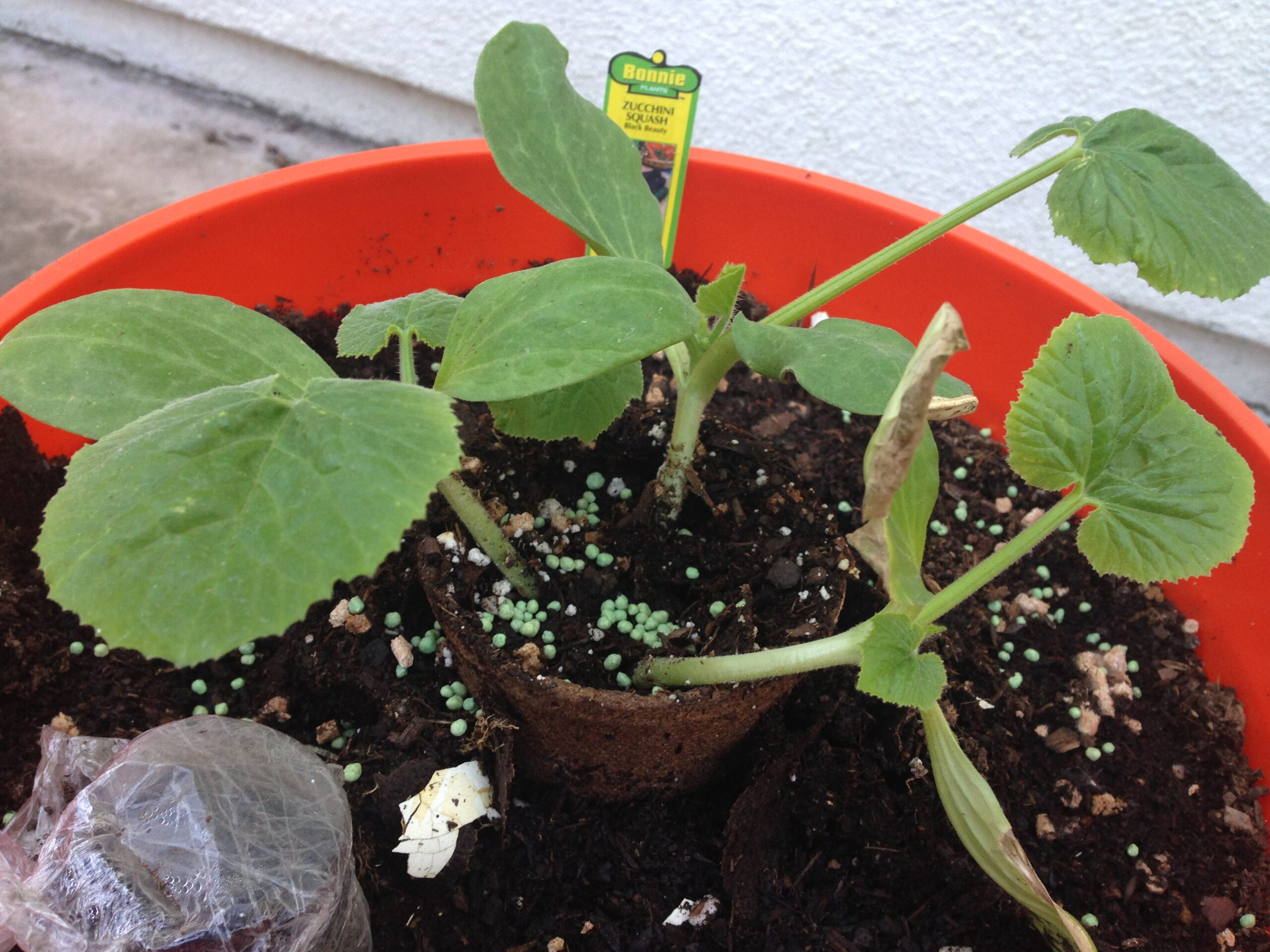
Harvesting Tips and Recipe Ideas
Harvesting zucchini at the right time
To ensure the best quality zucchini, harvest them when they are still young and tender. Over-ripened zucchinis can become tough and watery. Harvest the zucchinis when they are about 6-8 inches long, as mentioned earlier. Regular harvesting also encourages the plants to produce more fruit throughout the growing season.
Creative zucchini recipes
Zucchini is a versatile vegetable that can be used in numerous delicious recipes. From zucchini noodles (courgetti) and stir-fries to stuffed zucchini boats and zucchini bread, the options are endless. Get creative in the kitchen and explore new ways to incorporate zucchini into your meals. There are also plenty of online resources and cookbooks dedicated to zucchini recipes that can inspire your culinary adventures.
Conclusion
Growing zucchini in a 5-gallon bucket is a rewarding and practical gardening method, especially for those with limited space or poor soil conditions. By following the steps outlined in this article, from preparing the bucket, selecting and preparing the seeds, providing the right growing conditions, planting and caring for the zucchini, harvesting and storing the fruit, and troubleshooting common issues, you can enjoy a bountiful harvest of fresh zucchinis. So roll up your sleeves, gather your supplies, and embark on your zucchini-growing adventure!
